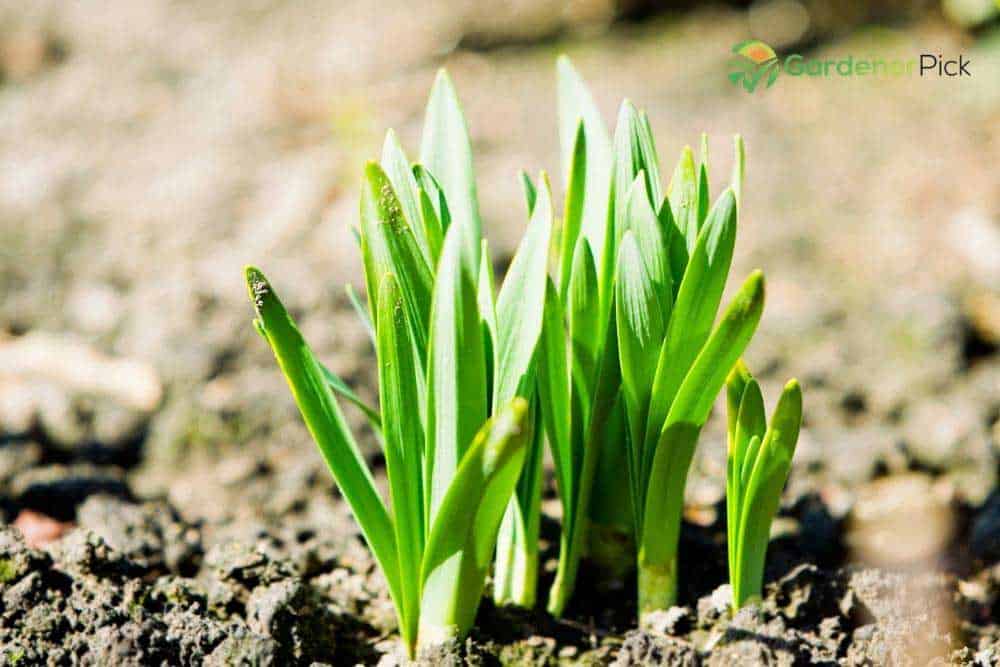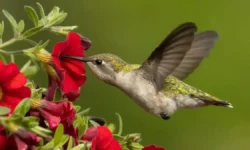The importance of lawn netting or erosion control blankets cannot be denied on the problematic sites for the better growth of grass and other vegetation. Whether it is your home garden or roadside, riverbank, or erosion-prone land, grass netting does wonder to achieve maximum growth from grass seeds.
However, the problem arises after the germination of new grass. What to do with lawn netting? Should you remove the erosion control blanket or let it decompose on its own? All of your hard work will be useless if you don’t know about grass netting. But after reading this comprehensive guide you can save your garden and make your efforts fruitful.
When to remove the netting from the new grass? It would be better to leave the netting on the grass and let it decompose naturally. But if it is disturbing the grass then fix the specific areas. Once the seedlings grow 2 to 3 inches tall, you can mow the grass and finally, remove the netting after mowing.
There is no logic to remove biodegradable netting like straw, hay, or jute, being an organic matter it improves the growth of new grass after decomposing as compost. But if it is necessary to remove the netting then rake it or unroll it carefully.
Let’s read on to discover more.
Table of Contents
When To Remove Netting From New Grass
Before we start our journey to find out the right time to remove the lawn netting, let’s have a glance at what lawn netting is?
What Is Lawn Netting?
Lawn netting is a fibrous matter woven in the form of a net and is used to spread over the seedbed on discredited or sloppy sites. Lawn netting is used to protect the seed and the soil from erosion, rain, and windburn. It prevents weeds, increases water retention, and protects the roots of the grass.
If you don’t install grass seed netting properly then a couple of problems may arise and you would not get proper vegetation on your lawn.
Why Do You Need To Install Lawn Netting
Why do you require lawn netting for better grass?
The landscape and the flat ground both get benefit from grass netting. The areas inclined to erosion are helped by supporting the soil and protecting the seeds from wind and rain. Lawn netting promotes the growth of grass and other plants.
After you have prepared the ground with top-quality seeds, and enough moisture according to the manufacturer’s suggestions, it is necessary to protect or cover the seeds from bird invasion, rinsing off, or blowing away by the wind.
A variety of natural or artificial fiber netting is available to safeguard the seed, hold the dirt and roots, and increase the vegetation.
Which Fabric to Cover New Grass Seed: Types Of Netting
The windy areas or erosion-prone sites are in great need to cover new grass seeds to provide protection and shelter against extreme climatic conditions until new seeds begin to germinate and their roots firmly hold the soil.
Wood fiber netting such as jute, coir, hay, straw, etc. is best because it is biodegradable, delivers maximum vegetation and protection, and is eco-friendly.
Knowing the types of netting or fabric covers helps a lot to make the right choice according to the weather and soil conditions.

When To Remove Grass Netting
After having prepared the ground for grass seeds, it’s time to wait for the new germination. Once your grass seeds have sprouted and got a height of 2-3 inches, the grass netting should remain there to protect the seeds.
You can remove the grass netting after mowing the grass once or twice, hence it may take 7-8 weeks for the proper growth of the new grass blades.
However, the netting should not be removed until the first mowing is done. Then grass netting can be removed gently by a garden fork.
When To Remove Straw Blanket From New Grass
How long do you leave the straw blanket on the top of the new grass?
When the new grass has fully grown and anchored to the ground firmly, you can remove the straw blanket after the first mowing. But if the straw blanket is thin and uneven then it should not be removed. Let it crumble between the grass blades to enhance the fertility of the soil.
Because the straw blanket is purely organic matter and will be decomposed in three months. So, no need to remove it from the new grass.
When You Can Take Straw Blanket Off New Grass
When can you take a straw blanket off the new grass?
You can take a straw blanket off new grass when the new grass grows fully and gets ready for the first mowing. Now you can either leave the straw blanket on the top of the grass or remove it if necessary.
Normally, a straw blanket does not disturb the growth of new grass. It is good not to meddle with a straw blanket because it easily decomposes in the soil.
How To Remove Seed Blanket
The seed blanket helps to hold the seeds in the soil but they have enough pores that seeds can sprout out and grow through them. When seedlings develop into fully grown grass, you can remove the seed blanket.
If it is inevitable to remove the erosion control blanket, remove the stakes off the ground, and carefully unroll the blanket with the help of someone.
Be gentle, avoid sudden pulling and jerking unless destroying the roots of the grass. If the seed blanket is broken, rake it with a garden fork.
Can You Mow Over Straw Netting
When the grass grows tall and gets ready for the first mowing, can you mow over straw netting?
Yes, you can mow over the straw netting but first fix the areas at which straw netting is popping up. Unless the plastic mesh would get tangled between the blades and axel of the mower.
While mowing, never mow more than 1/3 of the grass height at a time. This can damage the newly developed grass seedlings.
However, using a mulching mower can cut the grass as well as straw into very small pieces that can be easily decomposed to increase the richness of the soil.
What Happens To Straw After Grass Grows
Should you rake up the straw, after the grass fairly grows up?
After the grass seedlings grow mature and bigger for the first mowing, the straw netting should remain there between the grass blades.
When you start mowing the grass for the first time, the straw mulch will also get diced along with the grass and merge into the ground. So, you don’t need to bother about the removal of a straw blanket.
However, you can rake up the pieces of the broken net if they are scattered around and use them as animal beds or as compost.
Can You Seed Over Erosion Blanket
Can you put more seeds on the seed erosion blanket? Is it worth growing?
No, you can’t put seeds over the erosion blanket. Because seed can’t germinate if it is not placed directly on the soil. Soil is the basis for all vegetation.
It is futile to sprinkle seed on the top of a seed blanket but continuous watering the seed may press the seed down to the soil.
Plastic Lawn Netting Removal
Non-biodegradable or plastic netting takes a long time to degrade naturally. Plastic netting can be removed before it crumbles or is caught in the mower.
Carefully observe the growth of new grass. Once the grass is three inches long, remove the plastic mesh with great care because plastic netting is strong and can pull the newly germinated seedlings from roots.
Prefer using plant fiber netting because plastic netting can harm the birds and pollute the land when disposed of or burn.
Most Asking Questions
How Long Does it Take For Lawn Netting to Decay?
It depends on the nature and amount of lawn netting that is used to protect seeds. Usually, the lawn netting takes two to three years to disintegrate fully. It’s a pretty good time for grassroots to become strong enough to counter soil corrosion on a sloppy side or landscape.
When to Remove Jute Netting From The New Grass?
Usually, jute netting decomposes itself within a year. But if you want to remove jute netting off the grass then wait until the seeds begin to sprout out and grow taller and get ready for the first mowing. You can remove the jute blanket after the first mowing or leave it on the grass to decompose by mother nature.
Bottom Lines
Grass netting not only safeguards the seeds and anchors the soil but also provides a better environment for vegetation especially on discredited sites. It is better to leave the netting on the new grass. But if it is a nuisance then remove the netting while the seedlings get matured and grow 2 to 3 inches tall. However, natural fiber netting begins to crumble itself or get chopped by the first mowing and mixes in the soil.
There is no solid reason to remove the lawn netting unless it disturbs the vegetation or has some other serious issues. Straw, jute, and other natural fibers decompose in a season whereas plastic and other artificial material grass netting disintegrates with time and is difficult to gather off the grass. But you can remove grass netting right after the first mowing.






